Abstract
A review of virus thermal inactivation data published in the literature demonstrated variations in reported virus resistance. Examination of the methods used indicated that numerous studies were made by heat processing virus suspensions in test tubes. Duplication of some of the methods using milk suspensions of poliovirus 1 showed virus persistence after heating as a result of uneven temperature distribution inside the test tubes. Unless the containers (preferably sealed ampoules or capillary tubes) are completely submerged in the water bath and agitated vigorously, apparent virus persistence may be encountered.
Full text
PDF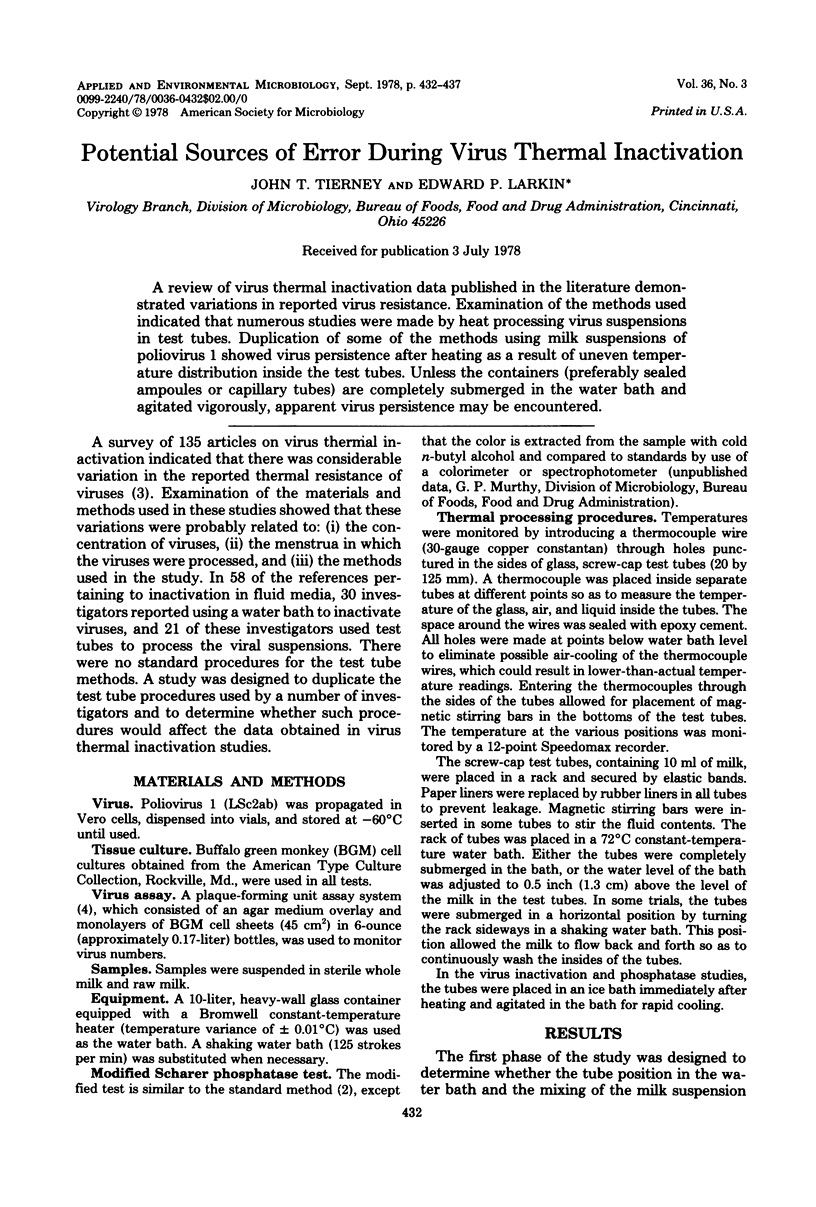
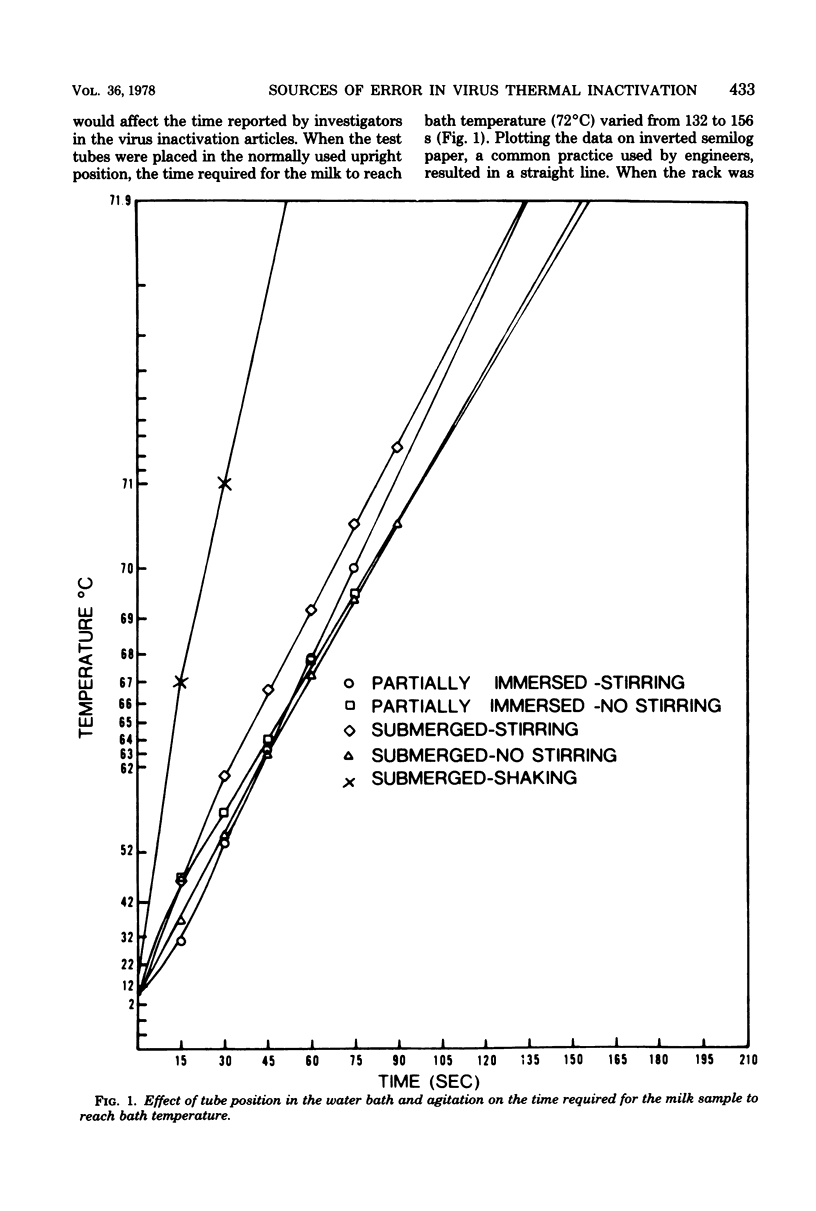
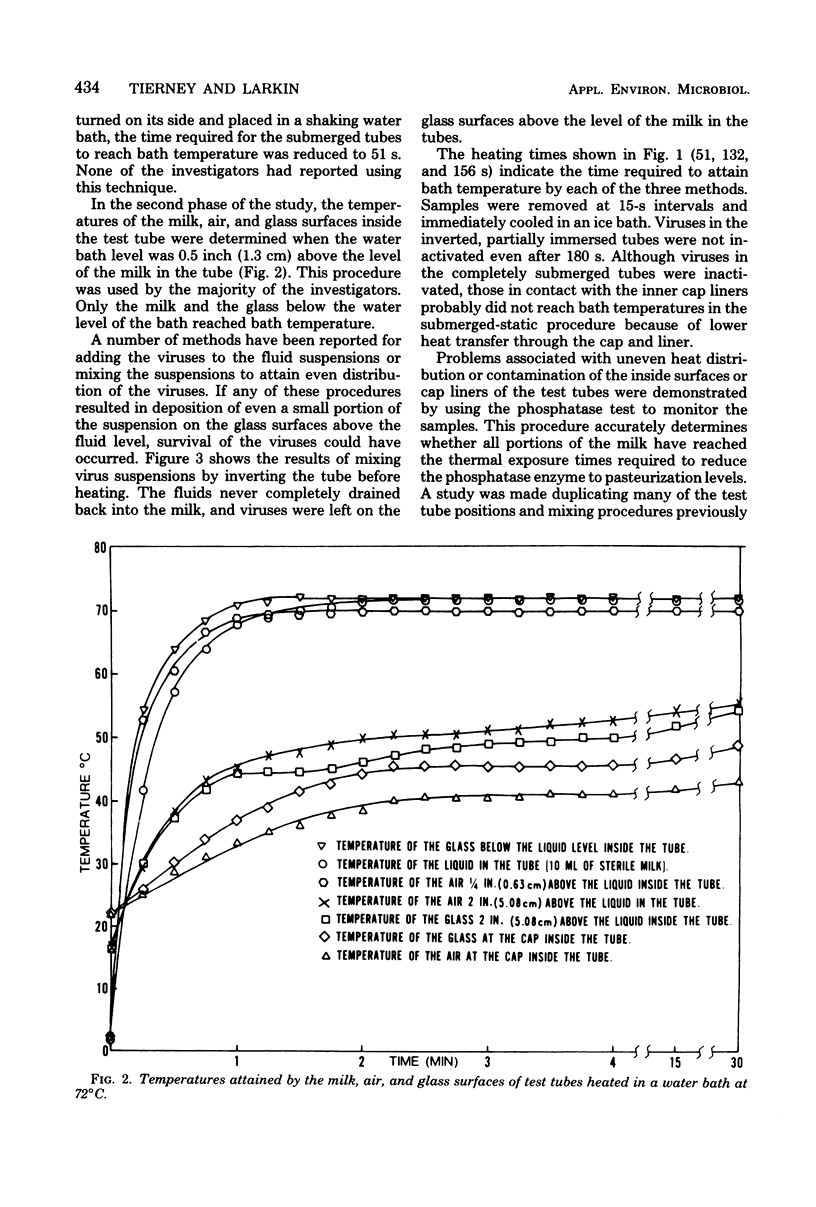
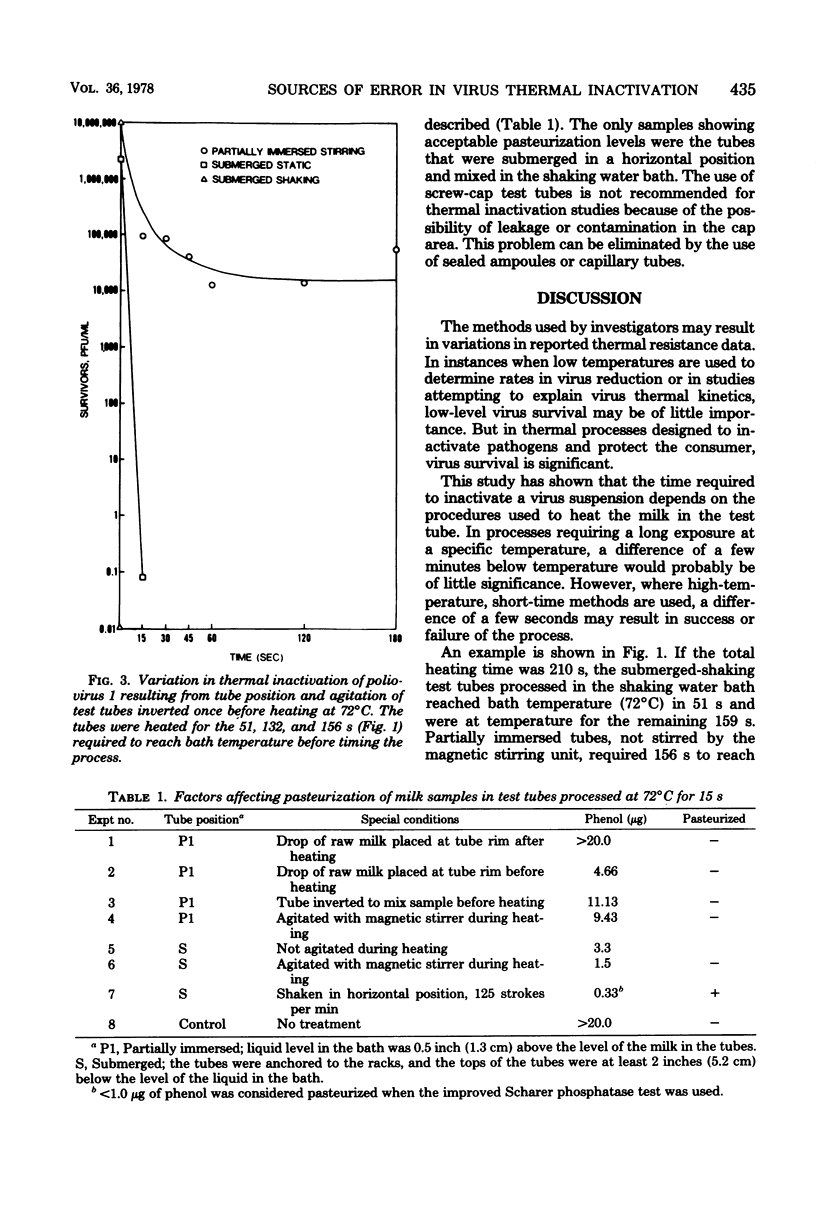
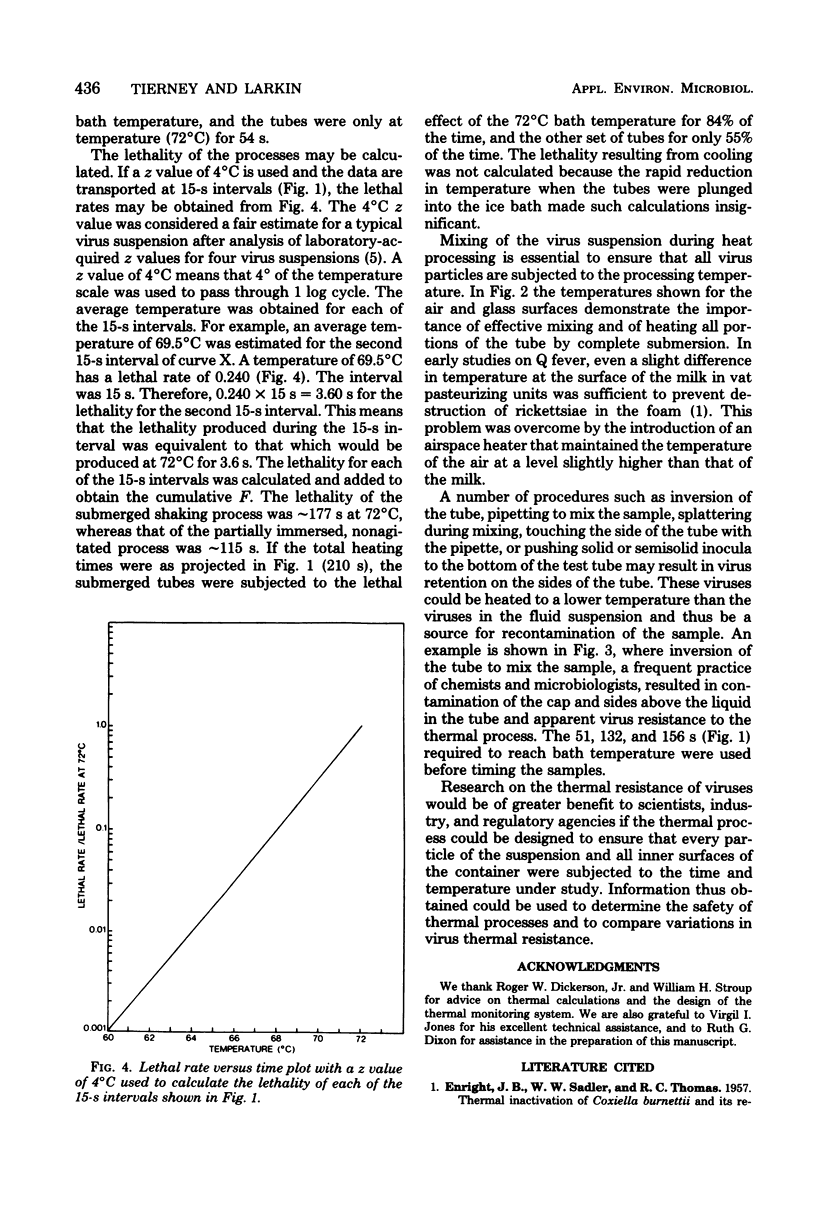
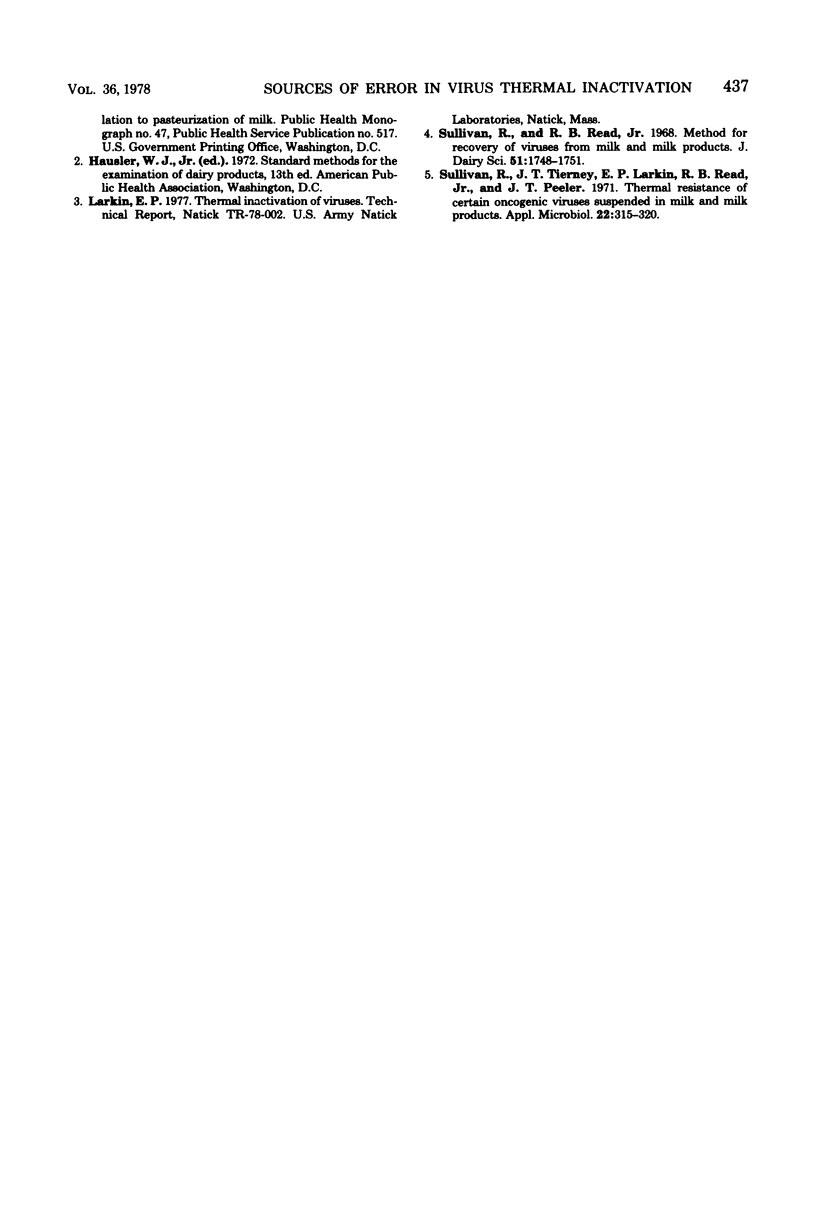
Selected References
These references are in PubMed. This may not be the complete list of references from this article.
- Sullivan R., Read R. B., Jr Method for recovery of viruses from milk and milk products. J Dairy Sci. 1968 Nov;51(11):1748–1751. doi: 10.3168/jds.S0022-0302(68)87270-4. [DOI] [PubMed] [Google Scholar]
- Sullivan R., Tierney J. T., Larkin E. P., Read R. B., Jr, Peeler J. T. Thermal resistance of certain oncogenic viruses suspended in milk and milk products. Appl Microbiol. 1971 Sep;22(3):315–320. doi: 10.1128/am.22.3.315-320.1971. [DOI] [PMC free article] [PubMed] [Google Scholar]


